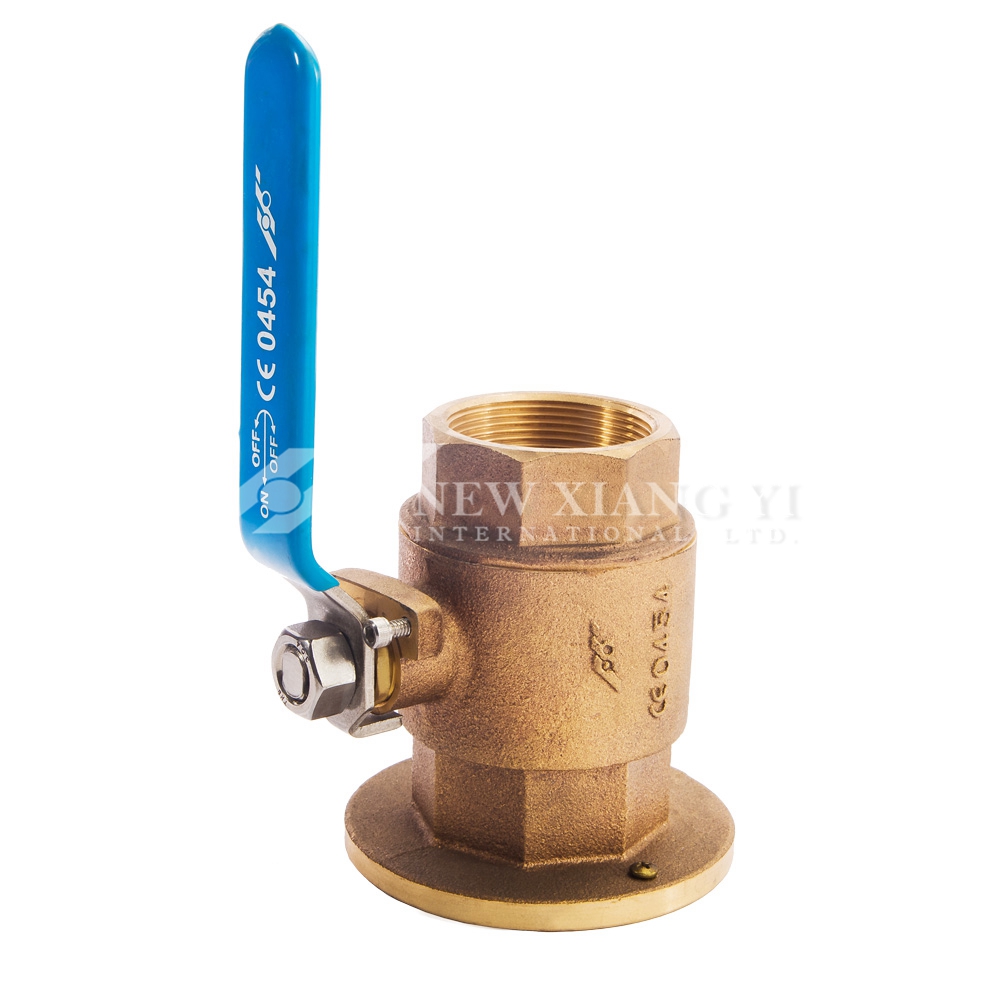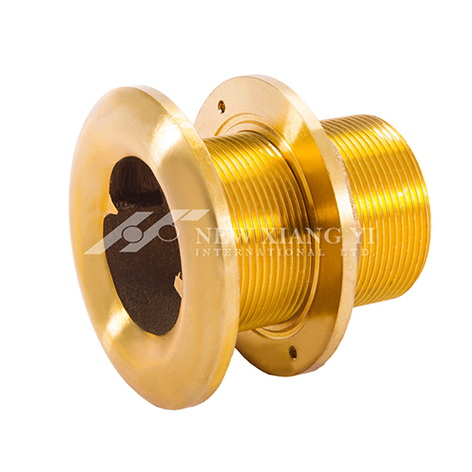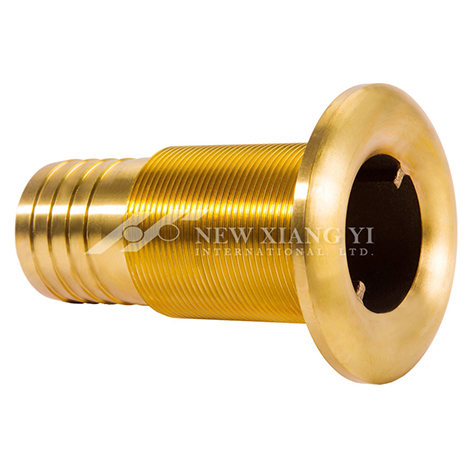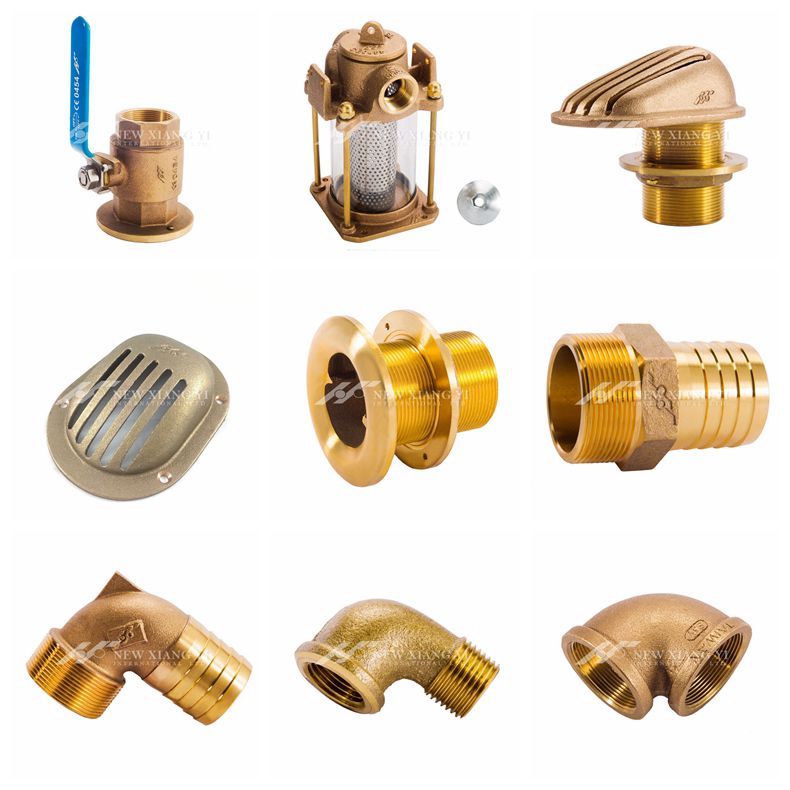
知识点: 出水口以及船用拷克/球阀

Never forget: the lowly seacock is all that stands between the sea and your boat
Clearly, with any device that penetrates the hull of a yacht, the choice of materials, design and method of installation is paramount to the safety and integrity of the vessel. Plenty of boats have been lost due to corroded through-hulls and seacocks, either through electrolytic breakdown of the material itself or by a failure of the valve mechanism attached to it.
Traditionally, through-hull fittings and seacocks were made of bronze and manufactured as a single part, as opposed to having a separate through-hull fitting with a seacock screwed onto it. The most well-known of this type is still made by England’s Blakes & Taylors (established in 1789) and has a tapered core plug mechanism that enables the valve to be adjusted in situ or even stripped down and serviced. Similar all-in-one bronze fittings are also made by Groco and Perko, although these both use ball valves (stainless steel and polymer respectively), rather than conical valves.
Unfortunately, these days all too many production boatbuilders will also fit whatever is serviceable in the short term and—more importantly—cheap. The question then becomes, are these seacocks safe?
Well, provided the through-hull fitting is independent and has been made from a suitable material, owners can at least upgrade the seacocks themselves. In my experience most yards use fittings made from copper/zinc/nickel alloys, which are sufficiently resistant to electrolytic corrosion.
Other alloys containing nickel and even arsenic are also available, but cost often eliminates their use. What you must do, therefore, is check carefully for de-zincification at least once a year by scraping the metal surface a little. If the revealed area looks in any way pink, the zinc is starting to “dissolve” out of the alloy and the item will need replacing imminently.
Unfortunately, mass production boatbuilders may also skimp with the seacocks themselves, which are frequently little better than domestic plumbing units and wholly unsuitable for marine/saltwater use. While they might have DZR (De-Zincification Resistant) bodies, they frequently have brass or stainless-steel ball valves and mild steel handles. The former can seize up if not turned on and off regularly. The latter will simply rust away and possibly snap off in as little as a matter of months.

MATERIALS
Seacocks and through-hull fittings can be made from a wide variety of different materials. The most common are alloys that are specifically designed to combine strength and corrosion resistance, particularly when submerged in saltwater.
Brass
Regular brass is an alloy made from mixing copper and zinc and is often used in the manufacture of cheap marine fittings, including through-hulls. Although it might seem an ideal material for the job, it isn’t, as the zinc component can be dissolved out of the alloy through electrolytic or galvanic corrosion (de-zincification), leaving a highly copper-rich fitting that is very weak.
De-Zincification Resistant brass
Commonly known as DZR or CR brass, this alloy also comprises copper and zinc, but small proportions of tin and arsenic are added to resist de-zincification and to increase its physical strength.
DZR brass is the most common material used in production yacht marine fittings, although some aluminum/brass alloys can also help prevent corrosion and de-zincification.
Bronze
Probably the best compromise for metallic skin fittings, bronze is an alloy of copper, tin, nickel and other metals—depending on the intended application of the material. Regular bronze is usually around 88 percent copper and 12 percent tin. However, aluminum is also often added in marine applications as it improves the alloy’s resistance to corrosion.
Stainless steel
Some companies supply stainless steel through-hull fittings, claiming they are the ideal solution to corrosion. Personally speaking, however, I’m not a fan, since apart from being expensive, they are prone to crevice corrosion, which occurs when there is a localized breakdown of the protective passive layer on an exposed surface. The reason for this is that stainless steel needs oxygen to work, which it can get from the surrounding seawater. However, where the fittings meet other materials, such as, say, a securing nut, very narrow crevices are often created where water can enter and stagnate while leaving no room for the free flow of oxygen. This causes the passive film on the stainless to deteriorate rapidly, which in turn can allow the material to corrode as quickly as regular mild steel.
If you must use stainless steel through-hull fittings, they should be marine grade (AISI 316) and you need to ensure that only stainless steel or nonmetallic seacocks and valves are fitted to them.
Marelon
Non-metallic skin fittings and seacocks have been around for ages, with Forespar’s Marelon being the most widely known. Although there are frequent scare stories circulated about these kinds of “plastic” seacocks, in truth they have very rarely, if ever, failed without some uncommon external force being applied.
Rather than actual plastic, Marelon is a polymer composite (glass-reinforced Dupont zytel to be exact), i.e., much tougher stuff, which is why these fittings have long since been accepted by the ABYC and certified by the ISO as meeting or exceeding the required mechanical properties for use on boats.
Durable and non-seizing, one of the main benefits of Marelon seacocks is that they’re totally resistant to deterioration caused by stray current or galvanic corrosion. Worries that they might melt in a fire are simply unfounded, if for no other reason than the fact that if such a fire was raging on board, you’d be safer abandoning ship anyway.


Some Other types
TruDesign
Another brand of nonmetallic seacock is the TruDesign range of ball valves. A product of New Zealand, they are manufactured from glass-reinforced nylon composite and have PTFE polymer balls and seals. Specifically intended for marine use both above and below the waterline, they also come with NPS parallel threads for the U.S. market.
For eco-sensitive applications such as holding tank plumbing, TruDesign valves can be locked in the closed position and comply with both ISO 9093-2 and ABYC H-27, as well as being certified by Bureau VERITAS and IMCI.
Installing a through-hull
When installing a through-hull fitting below the waterline of a solid GRP hull, it’s a good idea to smear some neat epoxy around the inside of the hole and let it cure before installing the fitting itself to ensure the laminate is fully sealed. If your hull is cored beneath the waterline (unusual, but not unheard of) it’s better to drill a smaller hole out first, remove the core material over an area twice the diameter of the fitting, refill the cavity and hole with solid GRP, and then drill out to the correct size for the fittings once totally cured.
When installing a fitting, the flange of the fitting must be smeared with a suitable sealant, such as Sikaflex 291i, Sabatack 750XL or BoatLife Life Seal. Although most polysulfide or polyurethane sealants will do the job, do be sure and check the installation instructions, as some fittings, particularly plastic ones for instrument transducers, may require a different product, such as a silicone-based sealant.
Apply the sealant liberally to the flange, insert it through the hole and finger-tighten the securing nut from the inside. Once it has cured, tighten the nut a further half-turn or so using a wrench, but don’t overtighten it.
Note, if the seacock is going into an especially tight spot, it’s a good idea before the sealant cures to temporarily screw the seacock onto the skin fitting by hand to ensure the handle is in a position where it will be easy open and close when fully assembled.

Seacock maintenance
Seacocks need to be used frequently to stop them seizing up. The seacocks that are most commonly ignored are those for cockpit drains and sink outlets, so make a point of turning these off and on a few times before leaving the boat.
Some types of seacock (especially Blakes tapered bronze fittings) require regular servicing, while others just need frequent use. Sometimes lime scale can jam up a ball valve, so try flushing a solution of white vinegar down the pipe every now and then, by a little light lubricant.
At the very least, all seacocks and through-hulls should be checked annually for general corrosion, de-zincification and limescale buildup. When out of the water, remove the hoses and closely study the ball valve and seal as you open and close it a few times to ensure all is well.
ELECTRICAL BONDING
No two marine technicians seem to agree when it comes to the question of the electrical bonding of metallic skin fittings. Some say you must; others say no way. I’m firmly in the latter group, for two reasons. First, I believe most boats are far enough away from any other nearby metals likely to create a galvanic circuit. Secondly, I worry that electrically bonding your through-hulls is more likely to make them vulnerable to corrosion from stray currents when connected to shore power in a marina (unless the boat is fitted out with an isolation transformer).
Finally, I’d also be concerned about the hull’s integrity should the boat be hit by a lightning strike, which could then be encouraged to exit through the bonded through-hulls, quite possibly melting the fitting on its way out!
Of course, if you fit non-metallic through-hulls then it’s one less thing you’ll have to worry about.

Writer: Duncan Kent
Share by Robin
上一页 :
铜规格下一页 :
船维护建议: 小小船用海底阀导致的沉船事故博客分类